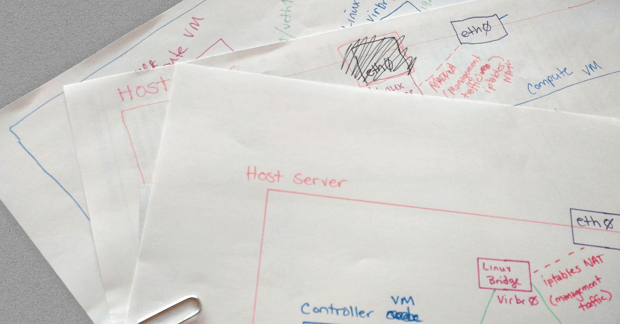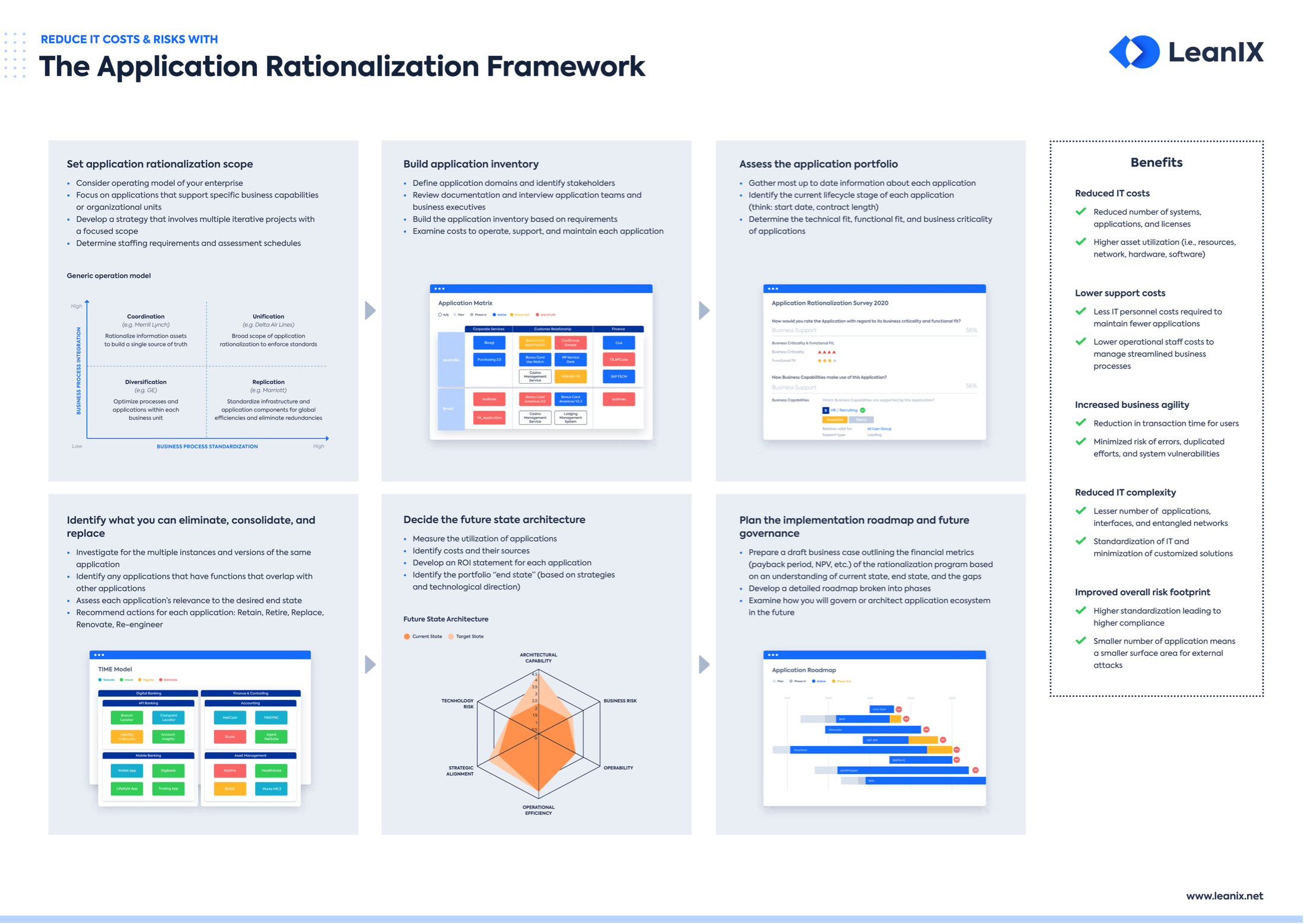
Infrastructure architecture (IA) refers to the practice of mapping, designing, and modeling the relationships between all the technical systems, hardware, applications, and networks that a company depends on to operate. Naturally, optimizing your infrastructure architecture will have an impact on everything from operation efficiency to customer experience and competitive advantage.
As critical as it may be, this optimization process can be complex. Corporate infrastructure today can consist of thousands of IT components and systems. Business priorities shift. New technologies continuously emerge. And when you consider that each company needs its own unique infrastructure architecture, it's clear why a methodical approach to IA matters.
Given the right tools, methods, and execution roadmap, you can improve your infrastructure architecture while laying the foundation for continuous improvement — all while gaining stakeholder buy-in and demonstrating the value of your efforts.
Quick Takeaways
- Infrastructure architecture includes IT-related hardware, software, networks, and employees/services that keep a company running.
- Business capability modeling provides a reference point for designing your optimal architecture and assessing your current architecture.
- Communicating with business stakeholders during IA optimization efforts is essential.
- Companies need to take advantage of cutting edge technology from the cloud to AI; there's no benefit to delaying adoption.
- Overarching IA improvement typically requires a phased approach.
What is infrastructure architecture?
A company’s IT architecture encompasses all of the IT assets and teams that support business strategy and keep the organization functioning properly. The category of assets to consider include:
- Hardware - Computers and mobile devices, data centers, servers, routers, etc. (Naturally, depending on the industry, "hardware" will also include machinery and other heavy equipment.)
- Software - Systems and applications installed in your hardware (like CRM or ERP system)
- Networks - Internet connections, firewall networks, etc.
- Employees/Services - Administrators, developers, engineers, enterprise architects, and even end users
Steady technological advancement coupled with the more recent decentralization of operations, enabled by the cloud and accelerated by the pandemic, has made for the most complex IT environments the business world has ever seen.
This means IT leaders, system architects, and enterprise architects have to be smarter and more intentional than ever before when building the right IT infrastructure for a given company. While each IA may differ, the guiding ideals for IA are shared: seamless workflows, efficient use of resources, enabling adaptability, and empowering innovation.
How to Build the Right Infrastructure Architecture for Your Organization
Start with Business Capabilities
Optimizing your infrastructure architecture isn't an end in itself. You are optimizing it for something: business success. For this reason, your optimization efforts need to start with the business and what the business needs to be able to do to stay in business.
Some of these business capabilities will be standard: you need to be able to hire employees, pay bills, charge customers, etc. Some of these will be specific to your industry, your market, your customers. Some companies need to be able to source dairy for ice cream production. Some need need to be able sequence DNA. Every company is different!
The point is this: Business needs must guide your optimization efforts.
Take Inventory
Once you know what your infrastructure architecture needs to do, you need to find out what it looks like right now. The first step to doing that is taking a careful inventory of every asset your real-existing IA currently includes.
For each asset you record, take note of several things: who owns it, what it's connected to (if it consumes data, from where? If it produces data, where does it go?), and what business capability it supports.
This can be a somewhat painstaking process — even with the right tools — and requires cooperation and contributions from everyone at your organization. Nevertheless, it is the foundation for everything that comes after.
Identify needs and gaps
Now that you’ve got an inventory of your IT assets and have a basic understanding of how they map to business capabilities, it’s time to look for gaps, redundancies, and misalignment in your infrastructure architecture. Because you need to ensure alignment with the broader business strategy, this evaluation process requires collaboration with high-level IT leaders and other executives.
The optimal infrastructure architecture will need to take questions like the following into account:
- Is the company eyeing any acquisitions?
- Is cost cutting on the immediate or long-term agenda?
- Are there big initiatives, such as a cloud migration, underway or in the works?
- Is the company moving into new markets? Developing new products? Changing operating models?
Quick win: Eliminating Redundancy
Here’s one of the fastest ways to optimize your infrastructure architecture: when a business capability is supported by more than one asset, pick the best one and eliminate the rest. If organizations operate in silos, as many do, it's easy for this kind of redundancy to develop, especially when it comes to software.
The elimination of redundant applications is part of any meaningful application rationalization initiative.
Download Poster: The Application Rationalization Framework
Eliminating redundant applications is not always easy, however. People get attached to their applications. You'll need to effectively communicate with the users of the outgoing applications, explaining the business reasons for the change and helping them transition.
Nevertheless, the results of eliminating redundancies has compounding benefits: lower overall costs, better use of IT resources, improved operational efficiency. In the end, the effort often pays for itself
Communicate with stakeholders
The need for effective communication doesn't stop with the elimination of redundant applications. Today, even a small change in your infrastructure can impact a wide range of people. Armed with your current state architecture (the result of your business capability modeling and inventory taking) and your understanding of where your architecture is heading (sometimes called "target architecture"), you should be able to foresee where impact of changes will be felt and communicate with the right people so they don’t experience disruption.
In general, it’s best practice to proactively communicate with all stakeholders about IT changes, why they’re happening, and what the impact will be. Even better, ask for ideas, suggestions, and feedback to gain buy-in and inform your plans.
Achieving Long-Term IT Infrastructure Goals
As you embark on your journey to build the best possible infrastructure architecture for your company, it’s essential to keep in mind that success doesn’t happen overnight.
Organizations are updating and modernizing their IA with phased approaches using enterprise roadmaps and other visual documents that outline the journey and provide a path forward.
The LeanIX platform offers the tools, resources, and insights you need to optimize your infrastructure architecture with the input, collaboration, and support of the entire organization.
Learn more about LeanIX EAM and schedule your demo today!
Image Source: Elizabeth K. Joseph - Creative Commons.






